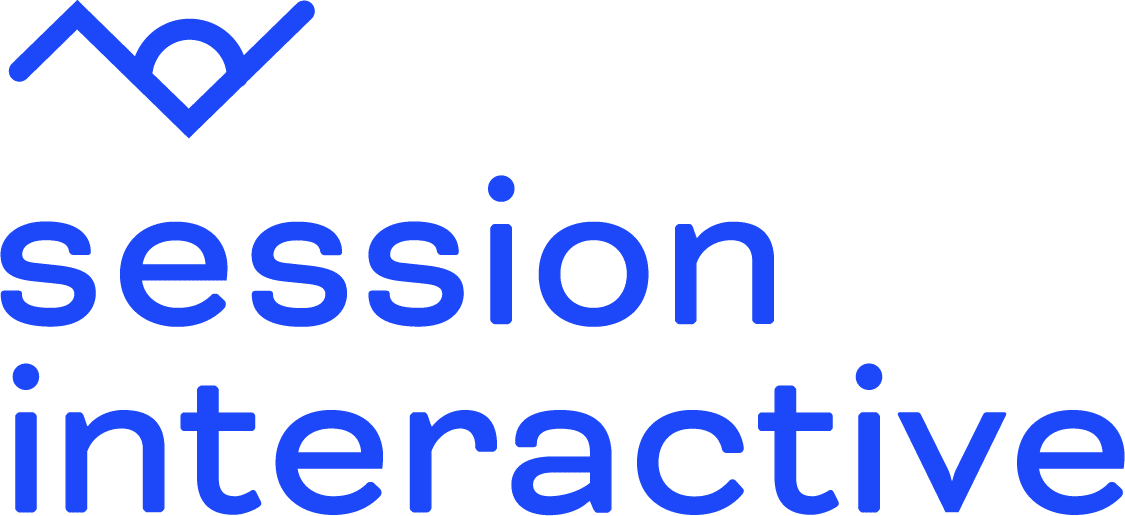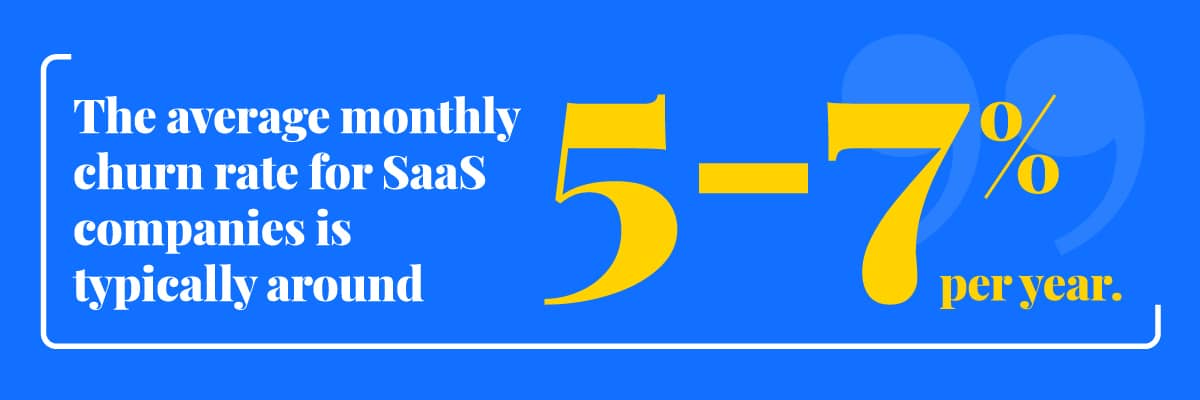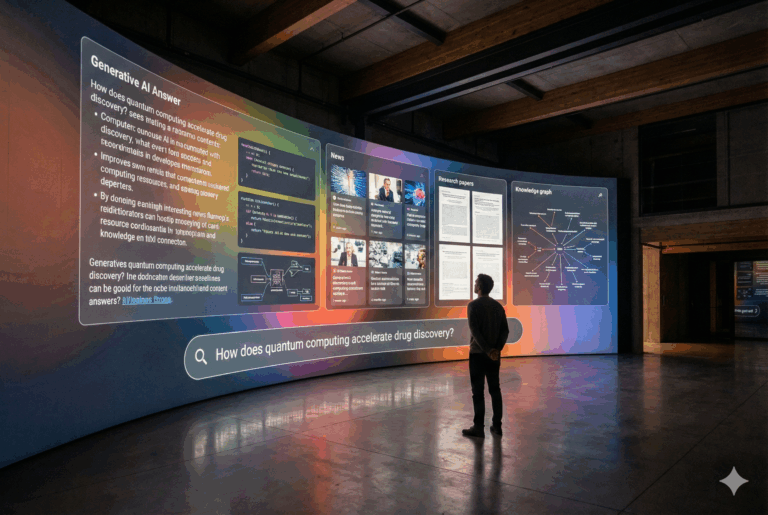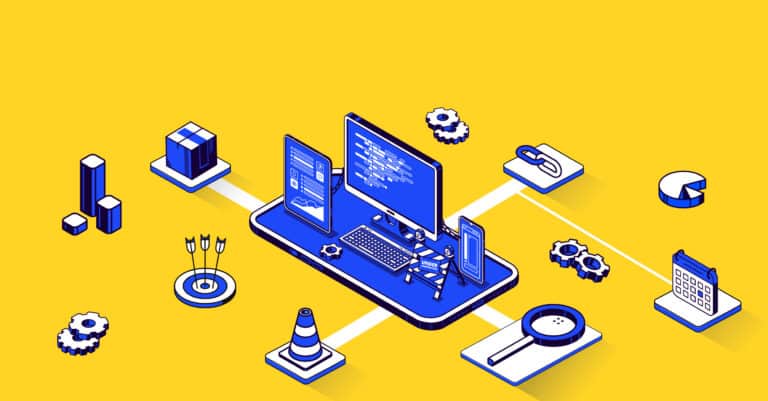SaaS presents unique challenges to us marketers.
The average monthly churn rate for SaaS companies is typically around 5-7% per year and they start to fail above that point, meaning that customer retention can be as important as customer acquisition.
It’s hard to capture the diverse world of SaaS in a single guide, but there are some commonalities. Webinars and live demos are crucial to showing off the software. Potential customers like to see SaaS in action. Free trials and freemium models are especially effective with an average 15-20% conversion rate. Plus, it’s important for marketing to work with customer success teams to make sure new customers stay engaged and experience the full value of the software.
Read on to learn about these insights plus many others.
In this guide:
As a digital marketing agency for SaaS companies, we’ve worked with companies like yours to improve their digital presence, including paid search, social marketing, and UX improvements for customer flow. We find that a common problem SaaS companies have is properly conveying their value to potential customers. Content marketing can really help bridge that gap.
Want to see an example? Here’s how we used customer segmentation to improve LinkedIn cost per lead by 92% for a SaaS company.
SaaS Marketing Strategy 101
A successful SaaS marketing strategy attracts, engages, and retains customers through various digital channels. The goal is to drive customer adoption and retention.
SaaS companies should consider free trials or freemium models, providing comprehensive onboarding sequences, and implementing customer success strategies. By offering hands-on experiences and ongoing support, potential users can fully grasp the software’s benefits, leading to higher conversion and retention rates.
What Is a SaaS Marketing Strategy?
A SaaS marketing strategy is a comprehensive plan designed to promote software as a service through digital channels, driving user acquisition and retention.
SaaS companies should emphasize product-led growth, using in-app recommendations and upgrades to drive engagement. This approach ensures that the product itself becomes a central part of the marketing strategy, allowing users to experience its value and encouraging organic growth through satisfied customers’ advocacy.
How to Create a Digital Marketing Plan for a SaaS Company
This section will help you build your high-level plan. We take our clients through this process to establish new projects. Later, we’ll explore the specific tactics that bring this plan to life.
Establish Clear Objectives and Goals
Setting specific, measurable goals is crucial for any marketing plan. Objectives guide all marketing efforts and help measure success.
SaaS companies should focus on objectives such as increasing free trial sign-ups, reducing customer churn, and boosting monthly recurring revenue (MRR). For example, aiming to increase free trial conversions by 20% within six months can provide a clear target to work towards.
Identify and Define Your Target Audience
Understanding your target audience lets you speak directly to your target in language that resonates with them. Knowing who will benefit most from your software is key.
SaaS companies should create detailed buyer personas based on user roles, industry needs, and pain points. For instance, identifying that your software caters to IT managers in mid-sized tech firms allows you to craft more relevant content and offers.
Choose Your Channels, Strategies, and Tactics
Selecting the appropriate marketing channels and strategies ensures your message reaches the right audience at the right time.
SaaS companies should leverage a mix of SEO, PPC, social media advertising, and content marketing. Using webinars and live demos can be particularly effective in showcasing your software’s capabilities and engaging potential customers.
Build Out a Marketing Calendar
A marketing calendar keeps your campaigns organized and ensures consistent communication with your audience.
SaaS companies should plan their content and campaigns around key dates, product updates, and industry events. Scheduling regular webinars, blog posts, and email campaigns helps maintain steady engagement and visibility.
Monitor KPIs Using Digital Analytics
Tracking key performance indicators (KPIs) allows you to assess the effectiveness of your marketing efforts and make data-driven adjustments.
SaaS companies should monitor metrics such as customer acquisition cost (CAC), lifetime value (LTV), and user engagement rates. Tools like Google Analytics and SaaS-specific dashboards can provide insights into what’s working and where improvements are needed.
Top Marketing Channels for SaaS Companies
Successful SaaS marketing works across multiple digital channels to reach potential customers. Each channel has its unique advantages that can help drive user acquisition, engagement, and retention.
Pay-Per-Click Advertising (PPC)
PPC advertising displays ads in search engine results or on other websites and pay only when the ad is clicked.
For SaaS companies, PPC is an effective way to target specific keywords related to their software solutions. By running targeted campaigns, such as promoting free trials or unique selling points, you can attract high-intent users searching for solutions.
Display Advertising
Display advertising places banner ads on websites, reaching a wide audience online.
This channel builds brand awareness and retargets visitors who have previously interacted with your site. Display ads are useful for staying top-of-mind and re-engaging potential customers who need more time before converting.
Search Engine Optimization (SEO)
SEO drives organic traffic growth by earning higher and higher spots in search results.
For SaaS companies, SEO is crucial for driving long-term, sustainable traffic. Focusing on keywords relevant to your software’s features and benefits ensures that potential customers find your product when searching for solutions to their problems.
Email Marketing
Email marketing means sending targeted messages to a list of subscribers to nurture leads and retain customers.
SaaS companies can use email marketing to deliver personalized content, onboarding sequences, and feature updates. Behavioral email marketing, triggered by user actions within the software, helps maintain engagement and reduce churn by addressing users’ specific needs and interests.
Content Marketing
Content marketing focuses on creating and distributing valuable content to attract and engage your target audience. Content marketing works hand-in-hand with SEO to drive organic growth.
SaaS companies should create content like blogs, whitepapers, and case studies to educate potential customers about their software and industry. Regular webinars and live demos are also effective content formats, showcasing real-world applications and building trust with prospects.
UI & UX Optimization
UI (User Interface) and UX (User Experience) optimization improve how users interact with your software, ensuring a seamless and intuitive experience.
For SaaS companies, optimizing the onboarding process through in-app guides and tutorials enhances user satisfaction and reduces churn. A well-designed UI/UX can differentiate your product from competitors and facilitate easier adoption by new users.
Social Media Marketing
Social media marketing uses platforms like LinkedIn, Twitter, and Facebook to promote your software and engage with your audience.
Social media is great for sharing success stories, industry insights, and product updates. Engaging with users and participating in relevant discussions helps build a community around your software, fostering loyalty and advocacy.
11 Digital Marketing Strategies, Tips, and Ideas for SaaS Companies
Implementing diverse and effective digital marketing strategies is essential for SaaS companies to drive growth, enhance user engagement, and stay competitive. Here are eleven top strategies tailored for SaaS businesses.
1. Multi-Channel Campaigns
Multi-channel campaigns allow you to reach potential customers across multiple platforms. For instance, planning PPC ads with email marketing and branded content creates a cohesive customer journey that encourages interest. This way, your message meets your customers on whatever platforms they prefer.
2. Event Marketing
Hosting or participating in industry events, conferences, and trade shows helps SaaS companies maximize engagement and acquire leads. These events provide opportunities to showcase your software, network with potential clients, and gather valuable feedback. You can attract high-quality leads and strengthen your industry presence by presenting live demos and offering exclusive promotions.
3. Webinars
Webinars are a cost-effective method for lead acquisition and expanding your prospect base. You can offer valuable insights and live demonstrations of your software, webinars engage potential customers and address their specific pain points. Recording these sessions also provides reusable content for future marketing efforts, extending their value.
4. Knowledge Base
A comprehensive knowledge base is crucial for helping potential and current users find information about your products easily. Providing user-friendly guides, FAQs, and video tutorials empowers users to resolve issues independently, enhancing their experience and satisfaction with your software. This resource also reduces the burden on your customer support team.
5. Free Trials
Free trials allow potential customers to experience your product firsthand before committing financially. This hands-on approach helps users understand the software’s value and capabilities, increasing the likelihood of conversion. Ensure that your trial period includes clear onboarding and support to maximize user engagement and satisfaction.
6. Customer Support
Robust customer support is especially important in SaaS marketing. Support elevates your product and brand by ensuring users receive the help they need promptly. Offering multiple support channels, such as live chat, email, and phone support, caters to different user preferences. Exceptional support builds trust and loyalty.
7. Competitive Analysis
Conducting regular competitive analysis helps you stay informed about your competitors’ strategies and tactics. Understanding what works for them can inform your own marketing plan, allowing you to identify opportunities and areas for improvement. Staying ahead of the competition ensures your SaaS product remains relevant and appealing to your target audience.
8. Content Marketing
Content marketing allows you to create helpful resources that potential customers will refer to. This builds brand awareness and trust and starts nurturing leads. Creating blogs, whitepapers, case studies, and videos educates your audience about your software and builds trust in the industry. When paired with SEO, valuable content assets reach the right audiences and act as a sustainable engine for lead generation.
9. Demand Generation
Demand generation focuses on increasing brand awareness and creating interest in your software. This strategy uses tactics such as content marketing, social media campaigns, and targeted advertising. Building a strong brand presence attracts and nurtures leads throughout the buyer’s journey.
10. Paid Lead Generation
Investing in paid lead generation converts brand-aware prospects into leads. Channels like PPC, LinkedIn Ads, and sponsored content enable you to target specific demographics and reach decision-makers. It’s always wise to tailor your ad copy and landing pages to resonate with your audience’s needs.
11. Affiliate Marketing
Affiliate marketing is a cost-effective way to reach new customer segments with partnerships. Affiliates promote your software to their audiences in exchange for a commission or lump cost. This strategy expands your reach, increases brand visibility, and drives growth with the affiliate’s audience.
Trust a Knowledgeable Source
Sound easy? We hope that many of these are approachable enough to try, but nothing beats firsthand knowledge. At Session Interactive, we work with SaaS companies like yours to drive real results, not just vanity metrics. Ultimately it’s all about that low CAC (customer acquisition cost) and high CLV (customer lifetime value). Whether you’re trying to build a large community around a platform or hyper-target a specific job role at a specific group of companies, we have digital strategies to get you results.
Ready to elevate your SaaS company’s digital marketing efforts? Contact Session Interactive to discuss tailored strategies that drive growth and engagement.






